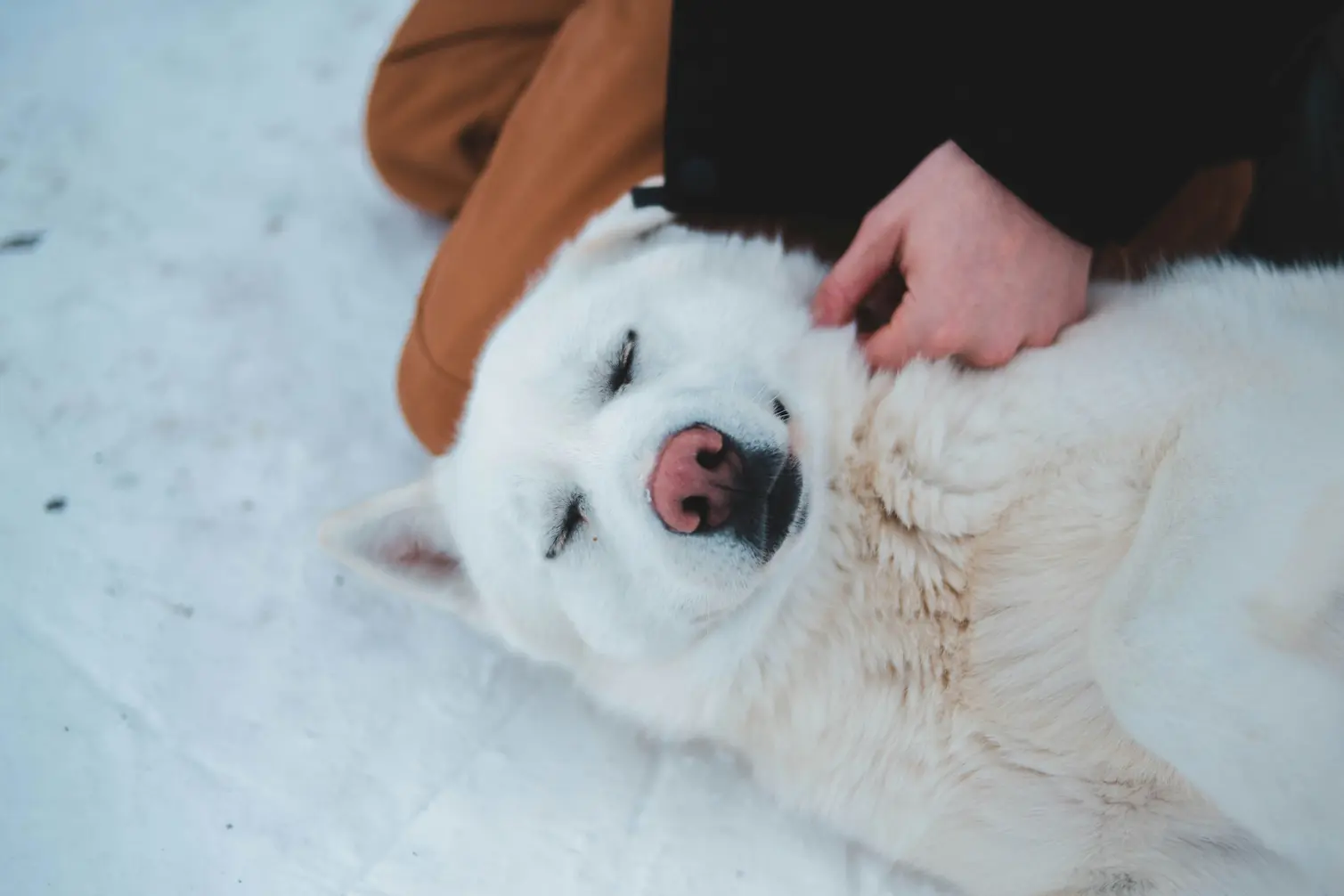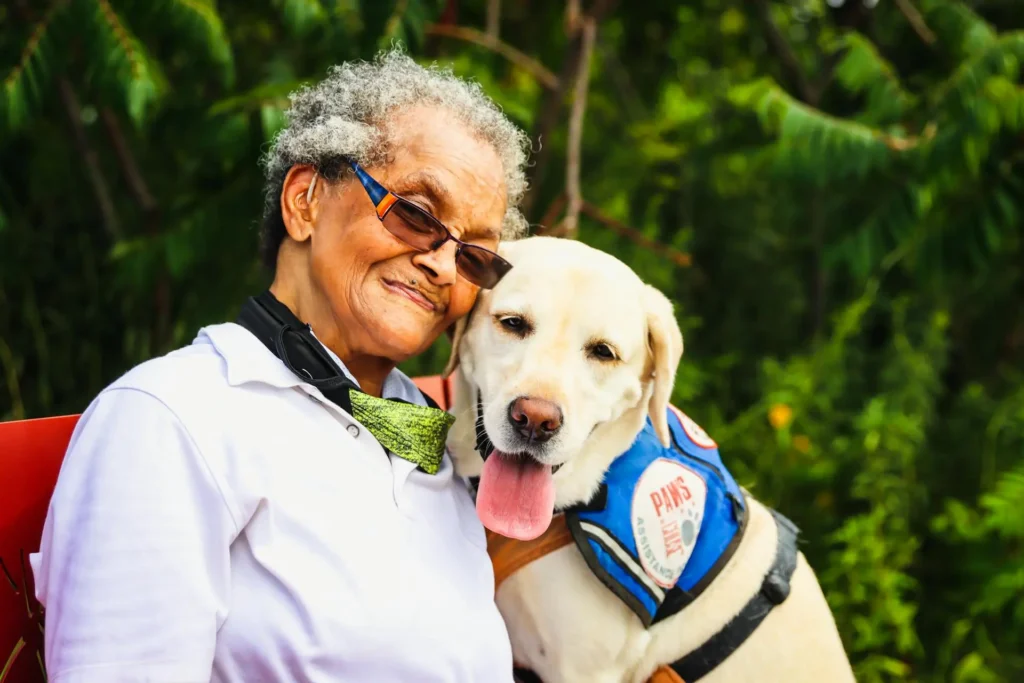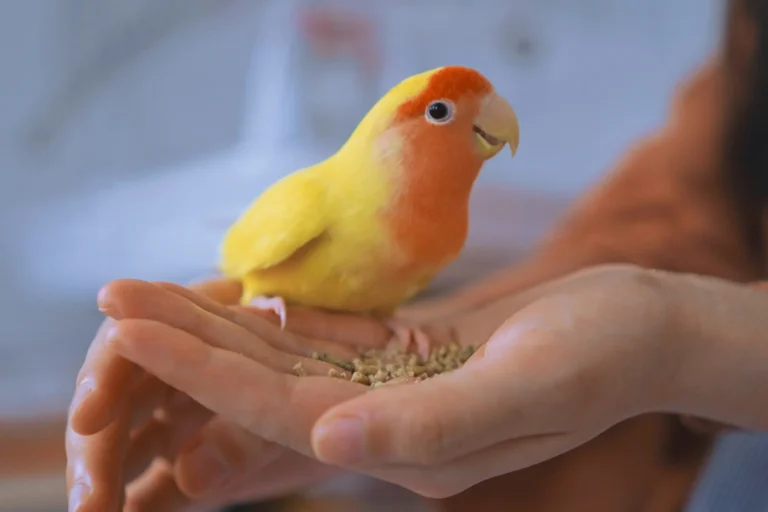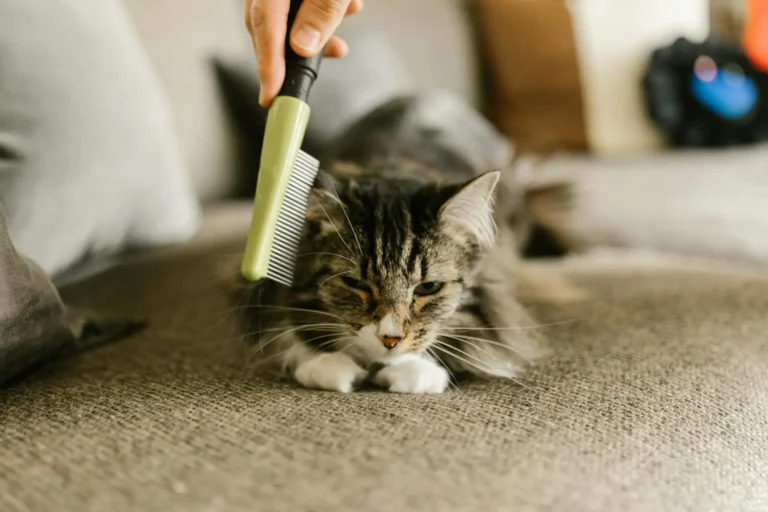Disclaimer: This article may contain affiliate links. If you click and purchase, we may earn a commission at no extra cost to you. As an Amazon Associate, we earn from qualifying purchases. All content is original and intended for educational purposes only. Consult a healthcare professional for personalized mental health advice.
Pets as Therapist: Your Free Mental Health Boost in 2025
Today with this article we are going to Discover how your pets as therapist offers free emotional support in 2025. Learn deeply with science-backed mental health benefits and stress-relief tips.
Did you Ever come home drained, only to have your dog’s enthusiastic tail wag or your cat’s soothing purr instantly lift your mood? That is the magic of your pet as a therapist with no appointments, no fees. In 2025, pets like my Beagle, Maximus, and my cat, Luna, remain vital for emotional well-being. This guide will tell you how everyday pets provide emotional support, manage stress and boost mental health, backed by science and stories from pet owners worldwide.
With mental health awareness soaring in our fast-paced world, pets offer a natural, accessible solution. Unlike costly therapy sessions, pets provide unconditional presence. Research from the Human Animal Bond Research Institute (HABRI) shows pets lower anxiety and foster connection. Intentional routines with your pet, like those I share with Maximus and Luna, can build resilience and daily joy. Whether you are a new or seasoned pet owner, this dynamic can transform how you face challenges.
We shall explore the science, share practical tips, and answer key questions to help you harness your pet’s therapeutic power. Pets complement, not replace, professional care. Let us celebrate these quiet heroes in our homes.
Key Insights on Pets as Therapists
This guide offers evidence-based knowledge and practical steps to maximize your pet’s therapeutic abilities, enhancing mental health without added costs.
Pets reduce stress through companionship and gentle interactions.
Daily pet routines build mental resilience and healthy habits.
Science shows pets lower blood pressure and ease depression.
Any pet like dogs, cats, birds,can be an emotional support companion.
Simple at-home pet therapy techniques amplify mental health benefits.
See the table below for a quick, mobile-friendly overview of all key points.
| Key Topic | Quick Takeaway |
|---|---|
| Understanding Pets as Therapist | Pets offer judgment-free emotional support, reducing stress. |
| Benefits & Challenges | Companionship boosts mood; pet care requires time. |
| Different Types of Pets | Dogs, cats, birds offer unique therapeutic benefits. |
| Practical Care Tips | Daily walks, play, and bonding support well-being. |
| Expert Insights | Pets decrease anxiety and enhance social interactions. |
| FAQs | Pets supplement, don’t replace, professional care. |
Understanding Pets as Therapist
Emerging 2025 studies reveal an “emotional mirror effect,” where pets subconsciously reflect their owner’s mood. Dogs mimic facial expressions and energy levels, creating a shared emotional rhythm such as deepening mutual empathy and healing.
“Pets as therapist” refers to the emotional support everyday animals like my playful Beagle, Maximus, or calm cat, Luna can provide without formal training. Unlike certified therapy animals, it is about their natural loyalty, non-judgmental presence, and ability to ground us. Pets sense our moods, creating a safe space for vulnerability.
In 2025, with remote work and digital overload fueling isolation, pets bridge the gap effortlessly. Many think only specific breeds like golden retrievers qualify, but any pet can help if the bond is strong. A glance from Luna can release feel-good hormones. Considering a new companion? Check out adopting a Schnauzer for seamless support.
This role stems from human-animal bonds fostering security, backed by research from the American Psychological Association (APA). Recognizing these dynamics helps pet owners cultivate connections for lasting emotional benefits.
Benefits & Challenges of Pets as Therapists
Neurochemical Secrets: How Pets Rewire the Brain
Pets’ therapeutic power lies in neurochemistry. Petting Luna or playing with Maximus triggers a surge of oxytocin, the love hormone, reducing stress by suppressing cortisol. A 2023 HABRI study found 15 minutes of dog petting boosts oxytocin by 30% in both human and pet, fostering trust.1 Serotonin, stabilizing mood, rises by 15%, while dopamine, driving pleasure, increases 20%, acting as a natural antidepressant.2
This is neuroscience in action. Pet interactions stimulate the vagus nerve, calming the fight-or-flight response, lowering heart rates, per APA research.3 Mirror neurons fire when Maximus tilts his head empathetically, enhancing connection. Luna’s headbutt after a tough day rewires neural pathways for calm. The table below shows hormone shifts after 15 minutes of pet interaction.
| Hormone | Before Interaction (%) | After 15 Min Petting (%) |
|---|---|---|
| Oxytocin | 100 | 130 |
| Serotonin | 100 | 115 |
| Dopamine | 100 | 120 |
| Cortisol (Decrease) | 100 | 70 |
Source: HABRI & APA, 2023.1
These changes explain why pet owners report 30% less anxiety, per APA findings.3 Pets are brain boosters, blending biology and emotion.
Pet Therapy in the Workplace: A 2025 Trend
In 2025, companies combat burnout with Pet Days and therapy dogs. Google’s dog-friendly offices boost morale, reducing stress by 44%, per Gallup.4 Amazon’s Pet Day events promote pet-inclusive cultures with adoption days.5 In India, WeWork India’s “Paw-sitive Fridays” cut anxiety and boost retention by 20%.6
| Metric | With Pets | Without Pets |
|---|---|---|
| Daily Stress Levels | Lower by 44% | Higher baseline |
| Employee Retention | 20% higher | Standard |
| Social Cohesion | Improved by 30% | Moderate |
Source: Gallup, 2024.4
Salesforce’s “Puppyforce” program offers shared dog spaces, enhancing community.7 Advocate for a trial Pet Day to humanize your workplace.
Different Types of Pets as Therapists
Each pet type offers unique therapeutic benefits. Dogs like Maximus encourage exercise and social interaction, boosting dopamine and reducing isolation, per HABRI.1 Cats like Luna provide low-key support; their 25-150 Hz purrs lower blood pressure, ideal for introverts or those with limited mobility.8 Birds, like parrots, foster mindfulness with songs, aiding seniors’ cognitive function, per APA.3 Rabbits teach children empathy, while fish aquariums reduce cortisol through visual calm.9 Match your pet to your emotional needs for maximum impact. Explore bird care for avian options.
Children, Seniors & Special Needs Benefits
Pets tailor support across life stages. For children, especially with autism or ADHD, guinea pigs reduce anxiety by 25% during play, boosting social skills, per HABRI.1 Seniors benefit from birds or cats, which combat loneliness by 15%, per NIH, and provide purpose through routines.10 For special needs, like PTSD, therapy dogs lower distress by 30%, per APA, offering grounding presence.3 My neighbor’s autistic son found calm stroking his rabbit, easing meltdowns. Pets adapt to unique needs, enhancing well-being.

Image Credit: Erik Mclean (Unsplash)
Practical Care Tips for Pet Therapy
Integrating pets into therapeutic routines is simple with consistency. Below are five research-backed strategies, including tools and anecdotes, to elevate your pet’s role in mental health.
Try a 5-Minute Pet Meditation
Boost your calm with this quick exercise: Sit with your pet in a quiet space. Stroke gently, syncing breaths to inhale for 4 seconds, exhale for 6. Focus on their warmth or purrs. This reduces cortisol by 20%, per HABRI, mimicking mindfulness.1 Try it daily for a week to feel grounded.
- Morning Walks for a Grounded Start
Walking Maximus boosts endorphins, countering cortisol spikes, per AKC.11 Choose 7-8 AM for a 20-minute scenic route. Use treats for engagement. My neighbor Tom’s terrier walks became his “mental warm-up,” improving focus in two weeks. Tools: leash ($10), poop bags, water bottle. Expect energy and mood lifts in 7 to 10 days. See dog exercise needs. - Interactive Play Sessions
Fetch with Maximus triggers dopamine, mimicking cognitive therapy.2 Allocate 15 minutes post-walk. Rotate toys weekly. A friend’s cat, Whiskers, eased her post-divorce blues with feather wand chases. Tools: balls, ropes ($5 to 15). Expect happier moods in days. Check dog toys for boredom. - Quiet Bonding with Your Cat
Petting Luna’s purring reduces blood pressure, per veterinary studies.8 Spend 10 minutes in a sunlit spot, stroking head to tail. My sister-in-law’s Siamese cuddles aided post-surgery rest. Tools: brush, blanket ($20). Expect calmer evenings in a week. See cat litter benefits. - Mindful Grooming Rituals
Grooming builds trust, releasing endorphins, per APA.3 Brush Maximus 2-3 times weekly for 10 minutes. A client’s Border Collie calmed during storms via grooming. Tools: slicker brush ($8), treats. Expect stronger bonds in 2 to 4 weeks. Reference grooming checklist. - Mood Journal with Pet Interactions
Journaling tracks emotional shifts, boosting resilience, per HABRI.1 Note activity, feelings (1-10), and gratitude after sessions. A blogger’s Luna cuddles halved worry days. Tools: notebook, app (free). Expect self-awareness in a month. See pet-friendly travel.
AI & Robotic Pet Therapy: The Future of Emotional Companionship
In 2025, AI and robotic pets like Sony’s Aibo and PARO the seal robot revolutionize therapy for those unable to care for live animals. Aibo learns tricks, reducing loneliness in seniors by 40%, per HABRI.1 PARO’s lifelike responses boost oxytocin, aiding dementia patients.12 Tombot Jennie mimics real pets, ideal for allergies. Trials show 70% mood improvement.13 Future AI pets may integrate with apps for personalized therapy, expanding access.

Image Credit: P T (Unsplash)
Pet Grief & Resilience
Losing a pet like Maximus or Luna can feel devastating, but their therapeutic legacy fosters resilience. Grieving with memories—Maximus’s tail wags or Luna’s purrs as it helps process loss, per APA.3 Journaling or creating a pet memory box channels emotions constructively. Volunteering at shelters, as I did after losing a pet, restores purpose, reducing grief by 20%, per HABRI.1 Pets teach us to heal through love’s enduring bond.
Expert Insights
The ASPCA reports pet interactions cut cortisol by 25%, easing anxiety.14 A 2024 Journal of Affective Disorders study found dog owners have 22% fewer depressive episodes due to activity and social prompts.15 Luna’s purring aligns with healing frequencies, per veterinary research.8 NIH notes pet ownership lowers loneliness by 15% in urban dwellers.10 These longitudinal studies affirm pets as accessible therapy adjuncts.

Image Credit: Kevin Turcios (Unsplash)
FAQs About Pets as Therapist
Q1: Can any pet act as a therapist?
Yes they do as dogs, cats, birds, or fish offer support through unique bonds. My parakeet’s whistles lift my mood. Choose based on lifestyle; see fowl bird guide.
Q2: How do pets alleviate anxiety?
Play and touch boost oxytocin, interrupting worry cycles, per WebMD.16 Maximus’s walks lower cortisol. Journal to track benefits.
Q3: Should pets replace professional therapy?
No as pets enhance, not replace, expert care. They uplift daily, but therapy addresses root causes. Blend both; see pet anxiety remedies.

Image Credit: Rupinder Singh (Unsplash)
Conclusion
Your pet as a therapist unlocks free emotional support in 2025. From Maximus’s romps to Luna’s purrs, pets weave science-backed benefits which lower anxiety, less isolation, more joy into daily life. We have covered their role, benefits, diverse pet types, AI companions, and resilience through grief. Start with a walk, cuddle, or 5-minute meditation. Share these insights and explore virtual pet care. Sometimes the best therapist has fur and four paws and does not charge by the hour.

With 5–7 years caring for Maximus and Luna, I share science-backed pet care tips to empower owners for joyful, healthier lives with their pets.
Disclaimer: This article may contain affiliate links. If you click and purchase, we may earn a commission at no extra cost to you. As an Amazon Associate, we earn from qualifying purchases. Content is for informational purposes; always seek professional medical advice for health concerns.























